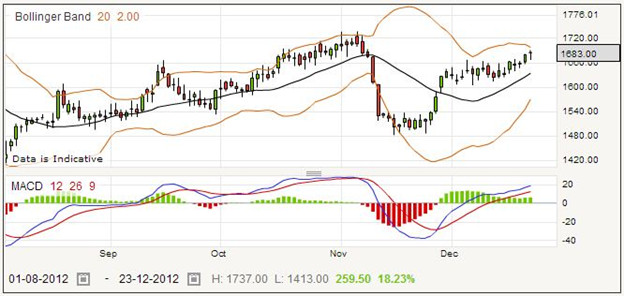Ultra Electronics is a British company, headquartered in London, and operating in the defence and security sector. Looking at the daily price chart below, you will see there have been many spread betting opportunities in the past, and significant volatility.

The company was started in 1920, when it was known as Edward E Rosen & Company. First of all it made headphones, and in 1925 the company Ultra Electric was founded. It introduced a radio (“wireless”) in 1931, and went on to manufacture wide range receivers in the 30s. In 1939 Ultra produced a television receiver for the BBC.
World War II saw diversification into building parts for airplanes, but following that in 1956 Ultra opened a new factory for television and radio production. It split into two divisions, one of them dealing with electronic products and the other covering consumer radio and television sets. The consumer side was bought by Thorn Electrical in 1961, which continued to use the Ultra name for a number of years. The rest of the company was renamed Ultra Electronics.
Ultra Electronics was bought by the Doughty group in 1977, but had a management buyout in 1993 followed by a public offering on the London Stock Exchange in 1996. It now provides support systems for defence contracts, including Tactical & Sonar Systems, Aircraft & Vehicle Systems, and Information & Power Systems.
From a trading perspective, the shares have exhibited good trends, most of which would be tradable. The sharp decline in November was marked by the MACD crossing, so even that could have been traded, subject to confirmation from other technical indicators. In general, there is very little sideways trading in evidence on the daily price chart, which means that you have a good opportunity to make money by spread betting on this security.
Ultra Electronics Holdings Rolling Daily
Ultra Electronics is a volatile stock, and therefore can reward the spread better who has a good trading plan. The current price for a rolling daily bet on Ultra is 1685 – 1693. Supposing that you believe the price will go up, you might want to place a spread bet for £6 per point, and this would go on at the buying price of 1693.
Perhaps the price goes up to 1761 – 1769, and you decide that you want to close the bet and capture your profit. Your starting price was 1693, and the bet closed at the selling price of 1761. That means you have gained at 1761-1693 points, which works out to 68 points. Multiplying this by your stake of £6, your profit is £408. Note that your account may have seen a slight adjustment in the evenings when the bet is rolled over, but usually this is not financially significant.
While you will always take the bets that you believe are going to win, you will have a proportion that do not. Suppose in this case the price went down to 1639.4 – 1647.4, and you decide to accept your loss and close the bet. Taking the closing price of 1639.4 away from the opening price, you find that you have lost 53.6 points. 53.6 times £6 works out to £321.60 loss.
An alternative way to close a losing position is to allow your spread betting provider to do it for you, using a stop loss order which you place when you open the bet. A stop loss order in this case might have stopped the losses when the price was 1662.2 – 1670.2. The opening price was 1693 as before, and this time the closing price was 1662.2. That means you lost 30.8 points. For your size of stake, that works out to a loss of £184.80.
Ultra Electronics Holdings Quarterly Futures
For the futures based spread bet example, suppose you have taken out a short position, believing that over the next few months Ultra Electronics will go down in price. The current quotation for a futures bet for the far quarter is 1695 – 1707, and you decide to stake £4 per point.
For a winning example, suppose that the price goes down to 1581 – 1593. You can work out how much you won like this: –
- Your short bet was placed at the selling price of 1695
- You closed your bet when the price fell down to 1593
- That means you have gained 1695 minus 1593 points
- This works out to 102 points
- You staked £4 per point
- Therefore you won 102 times £4
- This works out to £408
If after you placed your short bet the price went up, you might choose to accept your losses and close the bet when the quote is 1740.6 – 1752.6. Here is the calculation for the loss: –
- Your short bet was placed at the selling price of 1695
- You closed your bet when the price went up to 1752.6
- That means you have lost 1752.6-1695 points
- Which is 57.6 points
- You staked £4 per point
- Therefore you lost 57.6 times £4
- This works out to £230.40
As many spread traders do, you might have decided to use a stoploss order to protect yourself from large losses. Perhaps with a stoploss order, your losing bet would have closed when the quote was 1717.8 – 1729.8, making the calculation like this: –
- Your short bet was placed at the selling price of 1695
- Your bet was closed for you by your spread betting provider when the price went up to 1729.8
- That means you have lost 1729.8-1695 points
- Which is 34.8 points
- You staked £4 per point
- Therefore you lost 34.8 times £4
- Using a stop loss, you have lost £139.20